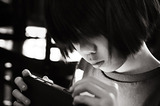
By the end of this section, you will be able to:Define aggressionDefine cyberbullyingDescribe the bystander effect
- Subject:
- Psychology
- Social Science
- Material Type:
- Module
- Author:
- Cheryl Williams-Jackson
- Date Added:
- 11/09/2019

By the end of this section, you will be able to:Define aggressionDefine cyberbullyingDescribe the bystander effect
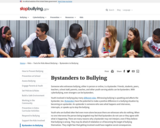
Short video (1:39) for middle and high school students that describes the effects of bullying and how to be an "upstander" when observing bullying.
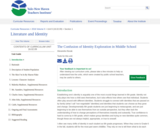
This 6th Grade literacy unit focuses on the Required Core Novel The Skin I’m In , by Sharon G. Flake. This unit explores the confusing journey to finding identity as a middle school aged student. The complex identities of five characters from the novel, Maleeka, Char, Mrs. Saunders, Caleb and John-John, are analyzed with multiple supplemental texts. The project for the students includes a daily “Identity Journal,” in which they analyze the characters using text evidence from both the novel and supplemental texts, and then compare these with what they are feeling or seeing within themselves. The unit culminates with a drawing of the student alongside the character the most identify with. Students present their journals with the drawings.
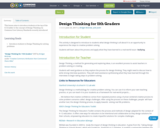
This lesson aims to introduce students at the top of the K-12 ladder to the concept of Design Thinking via Common Core Literacy Standards recently introduced
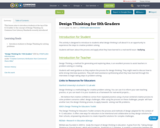
This lesson aims to introduce students at the top of the K-12 ladder to the concept of Design Thinking via Common Core Literacy Standards recently introduced

When we put ourselves in another person’s shoes, we are often more sensitive to what that person is experiencing and are less likely to tease or bully them. By explicitly teaching students to be more conscious of other people’s feelings, we can create a more accepting and respectful school community.

Grade 7 Internet Safety Lesson Plan

In this lesson we explore how bullying can affect us all, even when it’s not happening directly to us we might feel confused, scared, and uncomfortable. We read a book called Beautifully Me about a young girl who is confused about the ways people are talking about bodies- specifically large, or fat bodies. We talk about how feelings and emotions can be signals to us, sometimes they’re letting us know something in our world doesn't make sense and we might need help figuring it out. The lesson ends by thinking of the people/adults at home and school that they can go to for help.

Bullying is a widespread problem among our schools and communities that can lead to increased fighting and violent futures for both the victims and bullies themselves. How can youth change these statistics and contribute to a positive school environment?

This is the fourth lesson of the series “Dealing with Dilemmas: Upstanders, Bystanders and Whistle-Blowers,” which is designed to help students think about the importance of standing up for what they believe in despite both external and internal obstacles.
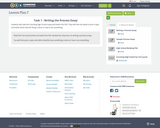
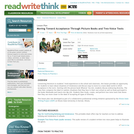
Students read and discuss literature about intolerance and diversity. They work with a partner to write two-voice poems that illustrate situations of intolerance at their school and suggest a step toward acceptance.

This lesson reminds students that they, too, make choices about whether to stand aside—or stand up—when someone else is being maligned, bullied or harassed. In standing up, we honor not only the other person’s humanity, but also our own.

Students begin by exploring relevant vocabulary words. They then view a video about Jaylen Arnold, a young boy with Tourette syndrome, and how he has overcome bullying by children who did not understand his condition. Students will discuss Jaylen’s story and create posters to help communicate his message. They will then develop guidelines for how they can celebrate diversity and reduce bullying and share these guidelines with other classrooms.
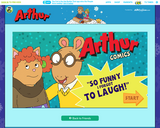
This is a great resource by PBS Kids. It is an interactive comic book of "So Funny I Forgot to Laugh" about Arthur and his friends. Arthur teases a friend about a new sweater, but goes to far. She asks him to stop and he doesn't, so she tells the teacher. The teacher tells him to write an apology and he writes a terrible apology that makes his friends even more upset with him. The story has multiple endings so students can try out different decisions. Goes well with the definition of bullying and what to do if you are being bullied...or if someone accuses you of bullying. Could also be used with understanding that people might exhibit bullying behavior but that doesn't define who they are "A Bully" for life.

In this lesson we will explore how peer pressure is related to social bullying - when someone uses their influence to harm or humiliate another person or leave them out of the group. We will use scenarios to explore some of the ways we might sometimes feel pressure to go along with our friends even when they don’t want to. We’ll talk about integrity and how to use it to help us make decisions. And what we can do when we see, or know that someone is being bullied.

Psychology is designed to meet scope and sequence requirements for the single-semester introduction to psychology course. The book offers a comprehensive treatment of core concepts, grounded in both classic studies and current and emerging research. The text also includes coverage of the DSM-5 in examinations of psychological disorders. Psychology incorporates discussions that reflect the diversity within the discipline, as well as the diversity of cultures and communities across the globe.Senior Contributing AuthorsRose M. Spielman, Formerly of Quinnipiac UniversityContributing AuthorsKathryn Dumper, Bainbridge State CollegeWilliam Jenkins, Mercer UniversityArlene Lacombe, Saint Joseph's UniversityMarilyn Lovett, Livingstone CollegeMarion Perlmutter, University of Michigan


By the end of this section, you will be able to:Define aggressionDefine cyberbullyingDescribe the bystander effect
